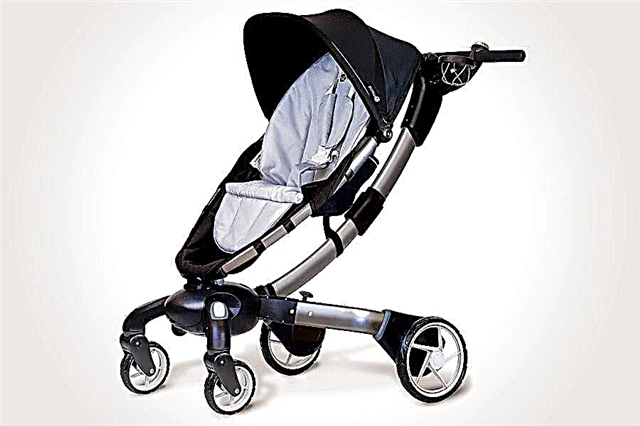One of the favorite treats for both adults and children is yogurt. This product is obtained by adding fermentation-promoting microorganisms to milk - thermophilic streptococcus and Bulgarian bacillus. This distinguishes it from other fermented milk products and ensures its beneficial effects. At what age can you start giving yogurt to your child? What are the benefits of this product for the child? Can it negatively affect the child's body? How to make healthy yogurt yourself at home? Is it possible to feed a child with store-bought yogurt and how to choose the right quality yogurt for toddlers?

Yogurt - how is it useful?
- Yogurt is a protein source that is easily absorbed in the child's body;
- This fermented milk product contains a lot of calcium, which is important in the formation of bones and strengthening of teeth;
- Yogurt contains a lot of vitamins A, B, contains potassium, chlorine and phosphorus. Yoghurts contain many vitamins and minerals important for the growth of a child;
- The probiotics in this product are good for digestion. and immunity Yogurt is useful to eat after taking antibiotics, it restores the microflora in the intestines;
- If you eat yogurt every day, the body produces interferon, and it increases the protective functions of the body;
- Children's yogurt can be liquid (you can drink it) and thick (pectin is added to it), which allows you to diversify the baby's complementary foods with this product.
When can yogurt be dangerous?
By itself, yogurt cannot harm a child, but since it belongs to perishable foods, there is a danger of feeding the baby with expired and spoiled yogurt. Always carefully check the product's manufacturing date and expiration date.
There are so many fermented milk products in stores now that in such an abundance, you can accidentally choose yogurt that is not intended for children. You need to be careful not to make such mistakes.
Are yogurt allergic?
A baby may be allergic to yogurt in two cases:
- if the fermented milk product contains berries and fruits;
- if the baby is allergic to cow's milk protein.
At what age are children offered yogurt?

For babies who are bottle-fed, pediatricians recommend giving yogurt from 8 months. For babies who are breastfed, this product is introduced into complementary foods from 9 months.
How to properly enter into the diet?
The first acquaintance of crumbs with yogurt is best done during breakfast, offering him one spoon of a new product... This is done so that during the day it was possible to assess the condition of the child - whether there was an allergy to yogurt. If there is no reaction, then in the future, yogurt is given to the child along with fruit complementary foods, during an afternoon snack. This is usually the fourth feed of the day. Yoghurt can also be combined with biscuits and cottage cheese.
Yoghurts without the label "for children" with live bacteria are given to a child after two years. What portion of yogurt is recommended for young children? The daily volume of this product should not exceed half the norm of all fermented milk supplements received by the child. Children under 1 year old are given 80-100 ml of yogurt, and at the age of 1 to 3 years, the portion is increased to 200 ml.
How to make yogurt yourself

To make yoghurt, you need to buy a special starter culture. You will also need fresh boiled milk. It is advisable to sterilize the dishes in which you will prepare yoghurt.
In a yogurt maker
Cool the boiled milk to a temperature of 38-40 degrees, not higher, add the leaven. At temperatures over 40 degrees, bacteria will not be able to multiply and yogurt will not work. After adding sourdough to it, mix thoroughly. We pour milk into sterile containers. Now the yogurt maker will do its job. It constantly maintains the desired temperature at which bacteria actively multiply. The main advantage of the yogurt maker is the long-term maintenance of the temperature required for the "work" of the starter microorganisms.

The cooking process in a yogurt maker takes about 8-10 hours. You can put milk on overnight, and in the morning you can eat yogurt. Store it in the refrigerator for no longer than 4-5 days. It is better for a child to give this product in the first two to three days after fermentation - the longer the yogurt is stored, the less beneficial bacteria it contains.
Making yoghurt in a yogurt maker:
In a multicooker
You can also make yoghurt in a multicooker if it has a “Keep warm” mode. Boil 2 liters of milk, then cool it to the desired temperature (38-40 degrees). Add sourdough to it. After closing the device with a lid, set it to the desired mode “yogurt”. Cooking time is 8-10 hours. When the yoghurt is ready, pour it into glass containers and put it in the refrigerator. You can eat it in 2-3 hours.
Homemade yogurt in a slow cooker:
In a thermos
Add the sourdough to boiled and cooled milk to 40 degrees, mix. We pour it into a thermos, after pouring boiling water over the thermos... This must be done to cleanse the thermos of pathogenic bacteria. We close the thermos, wrap it in a towel and put it in a warm place - near the battery in winter or in a sunny place in summer.
After 4-7 hours, the product is usually ready in a thermos. Now you need to pour the yogurt into sterile cups or jars. Then we send it to the refrigerator for at least a couple of hours. In a cold environment, the growth of bacteria stops, preventing further mowing of milk... You can put pieces of fruit, some jam, or syrup in yogurt.
How to make homemade yogurt in a thermos:
Homemade yogurt for children under one year old - recipes
It's good if the crumb liked the taste of yogurt without additives. However, some babies are happy to eat fermented milk products, if you diversify their taste with fruits. What ingredients do homemade or store-bought baby food yogurt work with?
- With apples or applesauce.
- Peach or peach puree.
- Pumpkin.
- Pear.
- Banana.
- Curd.
- Cookies.
Important! When you mix yogurt with fresh fruit, you should eat it right away, and you can add canned fruit puree from the store ahead of time.
Seasonal fruit salad with yoghurt

[sc name = ”rsa”]
Yogurt is a great dressing for fruit salads. Since it is better to give children only seasonal fruits, we will conditionally divide salads into summer and winter. Children over 1 year old can be pampered with this delicacy. Let's take a look at some yogurt fruit salad recipes.
Add fruits to your liking and remove those that are not at hand. Fruit salad is always delicious!
Summer salad preparation method:
You will need:
- small apple;
- pear;
- plum - 3 pcs.;
- melon - 1 slice;
- grapes are a small handful.
Wash the fruits thoroughly and peel them off. Cut the pulp into small cubes, season the salad with yogurt. If you need to sweeten the dish, add some honey.
Winter fruit salad:
You will need the following ingredients (1 each):
- an Apple;
- banana;
- kiwi;
- persimmon;
- mandarin.
Remove the skins and seeds from the fruit, cut the pulp into cubes. Spread the fruit in layers, seasoning each with yogurt. You can sprinkle a little sugar on each layer.
It is best to treat your baby to such a salad as soon as it is prepared so that the fruit does not lose its beneficial properties. To increase appetite and to interest the child, you can try to arrange a new dish in the form of a house, car or some kind of animal.
How to make yogurt taste great, and what beneficial additives can you use?
Dried fruits. Raisins and dried apricots are very useful on their own. If you add them to yogurt, then it will not lose its value and will acquire a sweetish note. Moreover, children always like to catch dried fruit from yogurt and its absorption turns into a kind of game.
Vanilla. It has a great scent that many are delighted with. If you add a little vanilla to the finished yogurt, then it will be incredibly aromatic and mouth-watering. The main thing is not to overdo it, otherwise the product will be slightly bitter.
Nuts. Nuts are rich in fats, which are essential for a growing child's body. They help make yogurt not only tastier, but also more satisfying. Cashews, almonds, hazelnuts, and walnuts are great health supplements.
Muesli. They can also change the taste of yoghurt and make it more satisfying. The flakes become soft and melt, which many children like.
What starter should you use?
If you want to prepare healthy yogurt for your baby, do not use ready-made store yogurt as a starter, as fillers and microflora of the product will give you unpredictable results. Buy only a special starter culture that contains the bacteria you need to make yogurt.
Buy starter culture at a pharmacy (or store), check its expiration date. Make sure to keep it in the refrigerator. When preparing yogurt for a baby under one year old, always use a new starter culture.
There are also ferments, from which other fermented milk products are prepared - these are streptozan, bifivit and vitalact. They contain other bacteria. Spoil your little ones occasionally with foods made with these starter cultures for a change.
Choosing good yogurt for your baby in the store

- Take a look at the label to see if the product is labeled "yogurt".
- Read the ingredients - baby yogurt should only be made from milk and sourdough. If the composition contains flavors, preservatives and thickeners, skip the purchase.
- You can buy yoghurts that contain fruit pieces, but you must give them carefully. The baby may develop allergies. It is best to add purchased puree from fruit to regular yogurt without additives.
- For a small child, especially the first year of life, it is better to choose dairy semi-fat or classic yoghurt with a fat content of up to 3.2 g. For a child from 2 to 5 years old, classic, milk-cream and cream-milk yoghurts are suitable. Low fat and low fat yoghurts are not the food of choice for children and should only be used on the advice of a doctor.
- Check the expiration date. Allowed value is 5-7 days. Yoghurts that can be stored longer contain preservatives. Don't buy a product that can be stored without a refrigerator.
- Yoghurts of today's well-known manufacturers - Actimel, Miracle, Ehrmann, Rastishka, Immunele, etc. do not belong to baby food. They have a longer shelf life, they contain dyes and flavors identical to natural ones. They are allowed to be given to children from 3 years old, this is indicated on the product packaging.
- If yoghurt is marketed as a bio product, the microorganism concentration data should be on the label. Usually, by the end of the shelf life, their content should be at least 107 CFU.
Agusha

2 types of yoghurts for children under 1 year old are produced under the brand name "Agusha"
- viscous to eat with a spoon;
- drinkable drinks that can be drunk from a cup or bottle.
Both are recommended from 8 months. Agusha is distinguished by the widest widest assortment of baby yoghurts.
Agusha yoghurts have a shelf life of 14 days.
Topic

Tyoma has only drinking yoghurts. Tyoma bioyoghurts are recommended from 8 months.
Ingredients: whole milk, powdered and skim milk, sugar, fruit puree and juice, thickener (corn starch), natural dye (carrot juice), acidity regulator (concentrated lemon juice), Bioyogurt Tema contains 3.2% protein, 2.8 % fat, 11.5%, sugar 5.8%, calories 84 kcal.
The introduction of yogurt into a child's menu is something that cannot be neglected, because the benefits of this product are obvious. The Bulgarian bacillus contained in it has a destructive effect on various pathogenic bacteria in the body. Therefore, yogurt can be called a natural probiotic that protects the health of your baby.
Consumer Tips: How To Choose The Right Yogurt?
Yogurt myths - the benefits and harms of yoghurt for the child's body
Although yogurt has been a well-known product for a long time, there are many myths around it. Let's consider the most popular ones.
Myth 1.Yogurt is a source of missing vitamins in the body. It is not true. Yes, yogurt contains vitamins necessary for a child's body, but their amount is very small. To replenish the body with missing vitamins, the child will have to drink liters of yogurt.
Myth 2. Live yogurt can have a long shelf life. This is a delusion of modern mothers who believe that technology has taught a quality product not to deteriorate for a long time. Not true. All-natural yoghurt can be consumed within a week and only if stored properly. After this period, all the beneficial bacteria in the dessert die and it can no longer be called alive. Long-term storage yoghurts contain preservatives, therefore they are not natural and are not recommended for use by children.
Myth 3. Yogurt is rich in calcium, like all dairy products. This is not entirely true. Calcium enters the milk-producing cow through food. If it is not in grass and forage, then it is not in milk, and it will not be in yogurt. Therefore, in order for the milk you bought (and, accordingly, yogurt) to contain calcium, you must know for sure that the cow received it, for example, with a special feed.
Myth 4. Yogurt is good for the kidneys. In fact, dairy products really cleanse the body of toxins and toxins, but fermented milk yogurt is not recommended for children with sand or kidney stones. In this case, nephrologists require to completely exclude it from the diet.
Myth 5. Yogurt should not be taken if urates are detected. On the contrary, yogurt should be drunk by children who have found them, since fermented milk products are the best to remove urates from the body.
Myth 6. Any yogurt benefits the body. The biological value of yoghurt is reduced to zero after it is pasteurized, so thermally processed yoghurts have absolutely no benefit - they no longer contain living bacteria.
Myth 7. Yogurt should not be taken for diarrhea. This is another common misconception. After restoring water balance, it is best to start eating with yogurt, which will help restore healthy intestinal microflora.
Myth 8. Sweet yogurt is just as healthy as plain yogurt. Sugar and bacteria can react with each other, so it is best to consume sugar-free yogurt.
Myth 9. Yogurt can replace two to three meals a day. You should not get carried away with yoghurts - the child's body should receive adequate nutrition, rich in proteins, fats, carbohydrates, micro and macro elements. Yogurt cannot fully replace other foods.



